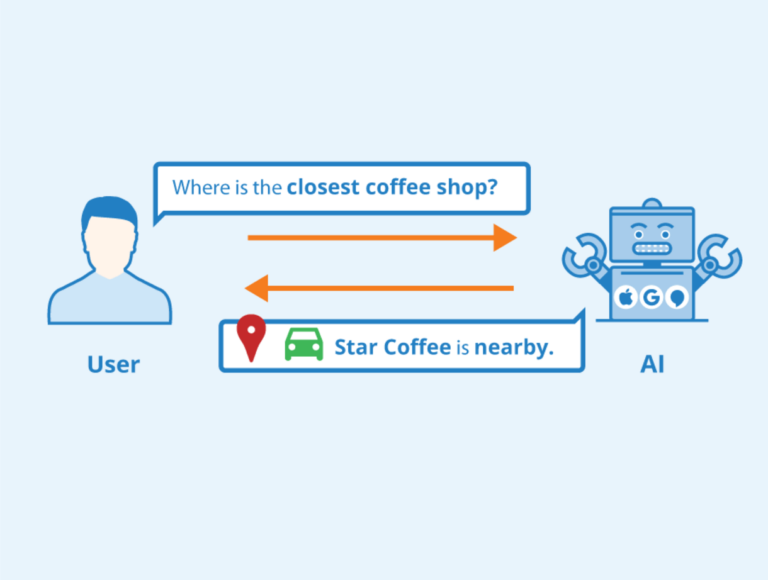Drop Servicing: How it works, benefits & more
Drop servicing sounds like dropshipping, but what is it and how does it work? This guide shows you everything.

Drop servicing is a catchy phrase – which means the outsourcing of services that you sell. In other words, you market a service that you get someone else to perform.
Also known as service arbitrage or sub-contracting, the drop service business can be very profitable when you market it well, because it is cheap to start and easy to scale, growing your profits without much extra work.
This guide looks at the drop servicing business model from an entrepreneur’s viewpoint, so you too can explore ways to make it work.
From Dropshipping To Service Arbitrage
You have probably heard of dropshipping before – the method of selling products that you don’t have, and then quickly back-ordering from a supplier once a customer buys from you. Drop servicing is the same idea.
However, you don’t deal with physical products in drop servicing, rather you deal with services such as copywriting, graphic design, website design, video creation, and so on.
Furthermore, you do not necessarily need to have the skills that you are marketing, although some basic knowledge can be quite helpful. Your sole job in drop servicing is finding clients and transferring their job requests to your freelancers.
How Drop Servicing Works
The drop service business model is not new. Agencies have been using this model for ages by hiring creative talent, marketing their skills, and getting paying clients. Following is a simple outline of the steps in a sample drop service operation:
- Mr. A, a potential customer needs custom video animation work done, so he searches the web and finds a website offering the exact services that he needs.
- After going through the website, Mr. A decides to buy a custom-animation package for $1,500, which will be delivered in a week.
- He places his order and pays for it using the website’s shopping cart. Then enters all the necessary instructions for the work to begin.
- Mr. A receives a confirmation email thanking him for his order.
- At the same time, Mr. B also receives an email informing him of a new order. He goes through the instructions and finds all the relevant details for the video animation.
- Mr. B then forwards these details to Mr. C, who is a skilled video animator.
- Mr. C gets to work and 5 days later, the animation is ready. He then transfers the data to Mr. B, who pays him $800 and pockets $700.
- Mr. B then sends the animation video to Mr. A the client, and the order is thereby fulfilled.
The example above describes a simple scenario with 3 parties, which is the minimum number of parties for drop servicing to work. These are:
- Mr. A the client
- Mr. B the drop server
- Mr. C the skilled freelancer
Of course, the operation could get more complex depending on the service being sold, but you can never have less than 3 parties.
Larger organizations (or agencies) would even hire MR. C the skilled freelancer permanently and pay him a fixed salary. That’s how most media and design markets functioned until they got disrupted by the Internet.
The Benefits of Drop Servicing
The benefits of starting a drop service business include the following:
- Low Startup Costs – Since you only outsource the work after receiving payment, there are generally no other costs involved.
- No Employees – Because you use freelancers for the work, there is no overhead or payments for employees, office space, insurance, and so on.
- Easily Scalable – Once you have a working system, all you need to scale is to build a pool of freelancers at your service.
- No Need for Expertise – Sure, you need to understand your market to drop service it, but you don’t need to be an expert because you outsource to your pool of expert freelancers.
- High-Ticket Sales – The absence of overhead makes it easy to go for high-ticket services that eventually bring more profits.
The Disadvantages of Drop Servicing
There are also some disadvantages of the drop servicing business model, and they are as follows:
- Freelancer Timing & Availability – Freelancers generally don’t work a 9-5 pattern, so getting an urgent project completed might be an issue. Except, you have a large pool of them.
- Quality Control – You are the one selling the service, so it’s up to you to deliver the service quality that you are selling. This means better management of your freelancers.
- Moral Issue – There’s a moral issue when your client thinks you are personally handling the tasks, while you drop service. It’s a personal issue though, but stating that you manage a team of professional freelancers and that you maintain top quality can be a better approach.
Drop Servicing Examples
How about some more examples to better explain the drop service concept? Following are a few:
- A well-established computer programmer gets a juicy project to develop a Web3 platform with lots of gaming features for $15,000. The programmer accepts the job, outsources it to an expert programmer in his pool for $5,000, and pockets $10,000.
- A PHP programmer gets a quick database job for $350. He sends it to his freelancer for $200 and pockets $150.
- A social media manager lands a contract to manage a company’s online presence for $400 a month. He outsources it for $300 per month and pockets $100.
How To Start A Drop Servicing Business
The drop service model is not a new concept, as agencies have been engaged in the business for ages. It’s only the Internet that opened up the possibility of easily vetting and hiring freelancers, thus making it possible.
Asides from that, the business model remains the same – use a more established brand to get contracts and outsource them to less established, but competent experts.
The following are the 10 steps that you need to follow to start a profitable drop service business:
- Choose A Niche
- Solve A Burning Problem
- Find What Sells
- Package It Into A Product
- Set A Fixed Price
- Set Clear Customer Expectations
- Learn What It Takes
- Create Your Website
- Market Your Services
- Build Your Team
Step 1: Choose A Niche
The first step is to choose your niche. This demands some market research to find what’s out there and what you are up against. You will need to know the needed skills, the pay range, and the availability of recurring income or not.
Keep in mind that choosing a niche with recurring income can help you to grow the business at a faster pace since you don’t need to do extra work for a satisfied client to bring you regular business. On the other hand, you will need to maintain your service quality.
Step 2: Solve A Burning Problem
Every niche has a problem that makes people look for solutions. Identify that problem and build your business around solving it.
Step 3: Find What Sells
You do not need to reinvent the wheel here, simply searching online marketplaces and freelancer platforms will give you an idea of what other providers are offering. Develop your solution from them, and it must be a specific service.
Step 4: Package It Into A Product
This step is very important – your service must be offered as a product. So, turn your specific service into a single product.
In simple terms “you pay this, you get this”, nothing else. For instance:
10 articles delivered each month for $100.
Facebook ads management for $200 per month.
Professional bookkeeping for $99 per month.
You can add more packages later. But you must start with just one.
Step 5: Set A Fixed Price
Your single product must have a fixed price for all customers.
Step 6: Set Clear Customer Expectations
Define exactly what a customer should expect in the package. How long the service delivery takes, the details of the package, your work process or steps, and any expectations you might have from the customer.
Step 7: Learn What It Takes
While you could go ahead and hire an expert, it is best to take a course on the subject. The reason is that being competent in the field will help you to hire and manage freelancers, leading to higher-quality service and more satisfied customers.
Step 8: Create Your Site
Your website is where you make the sales, so you will need some nice sales copy, complete with samples of your service, previous jobs, and so on. You may also need to create a profile on social media sites if you will be using such platforms for marketing.
The homepage can be your landing page. It should include the following in detail:
- What your service exactly does.
- How the service works.
- How long it takes to deliver.
- Testimonials.
- Package offers.
Step 9: Market Your Services
From social media to SEO, cold calling, and paid ads, your marketing choice will depend on the type of service that you are selling.
Step 10: Build Your Team
After you have gotten a few first clients and done the work by yourself, you can now lay down the process in properly defined steps. Then either hire an expert in the field per project or a virtual assistant on an hourly basis, to do the work following the steps you have laid down.
List of Best Niches For Drop Servicing
Lots of services can be easily adapted to fit the drop service model, while others can be modified with a little work and innovation to become a profitable venture.
The following is a list of popular services that you can drop service:
- SEO (search engine optimization)
- Website development
- Copywriting
- Translation services
- Ad copywriting
- Data science
- Video creation & editing
- Graphic designs
- Voiceovers
- Virtual assistant services
- User testing
- Résumé writing
- Lead generation
- Programming
- Social media management
Drop Servicing Frequently Asked Questions( FAQs)
Is drop servicing legal?
Yes.
How profitable is the drop service business?
It depends on the niche and your brand’s reputation. The profits can range from a few dollars to a 6-figure income when done well.
Can you start drop servicing with $0?
Yes, it is possible but not recommended. You should at least get a website.
How much will a good drop service setup cost?
A combination of your website hosting and marketing costs will give you an estimate.
Where can I find service providers?
On online freelancing platforms such as Fiverr, Upwork, and freelancer.com
What do you need to succeed as a drop service provider?
You need good marketing skills to build a reputable brand, which can range from a website to public profiles on online platforms.
Conclusion
We have reached the end of this drop servicing guide and you have seen everything from what it takes to drop service to how to build yours.
Of course, marketing is all about creativity – so feel free to innovate and take this plan to a new level.





